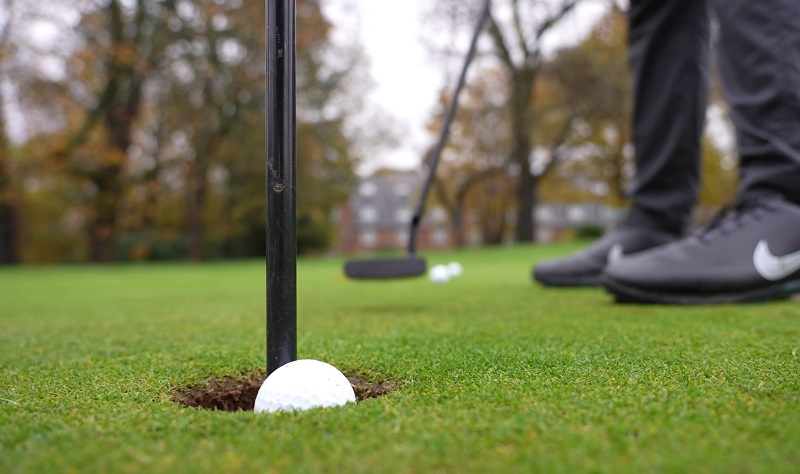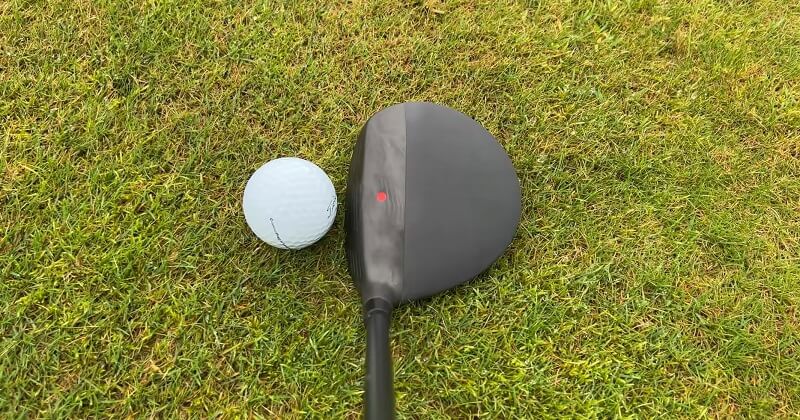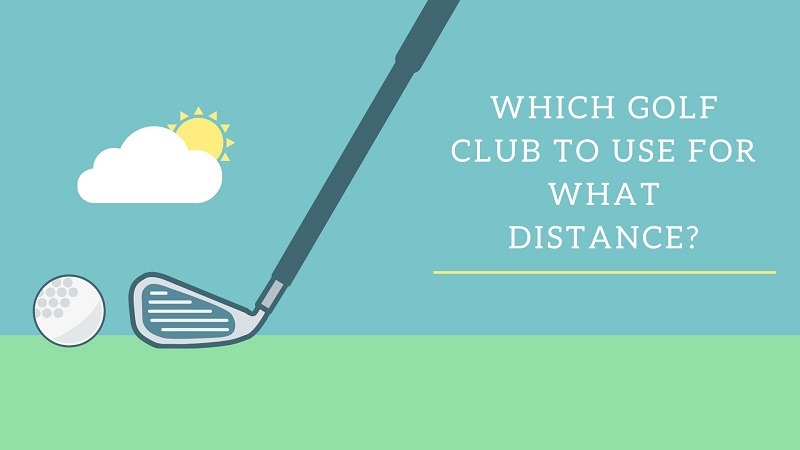In this blog post, we’ll explore which golf club is most suitable for what distance to ensure that you are fully equipped with the knowledge to make informed decisions no matter what type of shot you’re facing on your round.
Why Is It Important To Know The Average Distance Of Golf Clubs?
Golf is a game of precision, and knowing the average distance of your golf clubs is essential to developing a consistent and successful swing. Knowing the average distances for each club allows you to plan ahead on which club you need to use for any given shot.
When playing from different distances, golfers can have difficulty determining how far they should hit a shot, or which club they should use. With the average distance of each golf club known, golfers can better plan their shots and clubs to hit to get the ball where they want it to go.

In addition, knowing the average distances for each club can help you analyze your own game as well. If you know how far you should hit each club, it can give you a better understanding of what areas need improvement. For example, if your driver’s distance is consistently shorter than the average distance, this is an area to work on with your swing technique and equipment.
Finally, the average distances of golf clubs can also help golfers make more informed decisions when purchasing new clubs. Knowing the average distances for each type of club can help you determine which ones will work best in your game. This allows you to make a better-informed purchase decision and find the right clubs to optimize your performance.
Which Golf Club To Use For What Distance?

The type of golf club you should use depends on the distance you need to hit the ball. Generally, your driver will be used for longer distances and a wedge would be used for shorter distances.
For distances of 230 yards or more, it is recommended to use a driver. For 180-240 yards, it is recommended to use either a 3-wood, 5-wood, 2 iron or 3-iron. For 120-140 yards, it is recommended to use an 8-iron or 9-iron. For distances between 90-110 yards, it is recommended to use either a pitching wedge or sand wedge. Lastly, use your putters for any distances on the green.
Given the average distances of each club, you can plan ahead and select the right club for any shot you need to hit. This will help maximize your performance on the golf course. ̥
Here is the average distance chart:
| Clubs Types | Average Distance For Men | Average Distance For Women |
|---|---|---|
| Driver | 230 or more | 210 or more |
| 3-wood | 210 | 180 |
| 2- Iron/4-wood | 190 | 170 (Recommended 4-wood) |
| 3- Iron/5-wood | 180 | 160 (Recommended 5-wood) |
| 4- Iron | 170 | 150 |
| 5- Iron | 160 | 140 |
| 6- Iron | 150 | 130 |
| 7- Iron | 140 | 120 |
| 8- Iron | 130 | 110 |
| 9- Iron | 120 | 100 |
| Pitching Wedge | 110 | 90 |
| Sand Wedge | 90 | 80 |
| Lob Wedge | 70 | 60 |
| Putters | Any on the green | Any on the green |
Many people will disagree with it, it should be noted that this figure is for reference only, not completely accurate. In fact, the distance of each club varies depending on who is using it and depends on many factors such as technique, swing speed, skill, etc.
For low-handicap players, when they use Driver, they will hit a longer distance than high-handicap players, and medium-handicap players will give a different distance. Professional PGA players can hit up to 300 yards with a driver.
How To Understand Your Golf Club Distance?
The best way to understand your golf club distance is to practice using a launch monitor. A launch monitor measures variables such as ball speed, launch angle, and spin rate, helping you identify which clubs are better suited for different courses and situations.
Additionally, receiving feedback on your swing from a trusted professional can help improve your game by providing an in-depth analysis of your swing so you can make the necessary adjustments.
It is also important to practice and gain experience on the course to become more comfortable with your clubs and learn how different shots perform in various conditions. Doing this will help you better understand your golf club distance and improve your overall game.
What Are The Factors Affecting Golf Clubs Distance?

Swing Speed: The faster you swing the club, the farther your ball will travel. The speed at which you hit your golf ball is affected by many factors such as body strength, technique and form. Improving any of these aspects can help increase your swing speed and overall distance.
Loft Angle: The larger the loft angle on your club, the higher and shorter the shot will travel. Choosing clubs with a lower loft angle, such as 5 or 7-irons, can bring more distance to your shots than high-lofted wedges.
Shaft Flex: The flexibility of the shaft affects how fast and high the ball will fly. For maximum distance, it’s best to choose a shaft with a firm flex as this will help produce more head speed and therefore, more distance.
Clubhead Weight: The weight of the clubhead affects how fast your swing speed is and, in turn, how far your ball will travel. Heavier clubheads can help increase your swing speed and also prevent you from over-swinging.
Ball Spin: The spin of the ball has a great effect on how far it will travel. If you have too much spin, the ball won’t go as far because it is slowing down due to friction with the air. Too little spin and the ball will start to fade off course. Finding a balance between these two factors is essential for maximum distance.
Playing Conditions: External factors such as wind, terrain and temperature can also affect your golf club’s distance. A strong wind can cause the ball to travel further, while an incline can help with more airtime. Make sure to account for these conditions when calculating your golf club distances.
Course Knowledge: It is also important to understand the course you are playing and use your knowledge of its features to maximize distance with each shot. Knowing where the hazards, bunkers, and roughs are will help you strategize and adjust your shots accordingly.
Other Factors to Determine Which Golf Club to Use
Purpose Use Of The Club
Driver: The driver is often used for long-distance shots, typically on the tee box, to cover as much ground as possible. It has the lowest loft, which allows for a greater distance but lesser control.
Woods: Woods are usually used for long shots when the ball is not on the tee, they’re a great choice when you need to cover a lot of distance with accuracy.
Irons: Irons, ranging from 1 to 9, are versatile clubs used for a variety of situations. Lower numbered irons, like 2- or 3-irons, are used for longer shots, while higher-numbered irons, such as 8- or 9-irons, are used for shorter and more controlled shots.
Wedges: Wedges are used for short approach shots into the green, chips, pitches, and shots out of sand traps. They have the highest loft of any golf club, which allows for a high, short trajectory.
Putter: The putter is used for playing on the green and getting the ball into the hole. It has a flat face to roll the ball along the green.
The Line Of The Ball
The line of the ball is an important factor when choosing a golf club. The ball path should be kept in mind throughout your swing, from start to finish.
Irons are best suited for straight shots while woods are better for curving shots. Wedges and putters, on the other hand, can be used equally effectively for straight or curving shots.
Condition Of The Course
The condition of the course can also affect which golf club to use. On a wet or muddy course, for example, you may need extra loft for your iron shots so that the ball doesn’t sink too deep into the ground before reaching its target.
On a dry course, you may need to use lower-lofted clubs for longer shots. Understanding the condition of the course is essential when deciding which golf club to use.
The Wind Condition
The wind can also play a large part in choosing which golf club to use. A strong wind can significantly reduce the distance of a shot, making it necessary to choose clubs with some extra loft for more control and accuracy.
Read more:
- 15+ Best Golf Club Sets For Beginners 2024 (Men & Women)
- The 10 Best Driver Clubs for High Handicappers 2024
Conclusion
Knowing your golf club’s distances is a key skill for any golfer. This can be achieved by taking note of the factors that affect distance, such as type of club, weather conditions, terrain and ball trajectory. It would help if you also considered your swing speed and equipment quality when assessing the required distance for each shot.
By practicing regularly and becoming familiar with your golf club distances, you can make more informed decisions when selecting a club for each shot. This will ultimately help you become a better golfer. Good luck!
FAQs
Why Is 7 Iron So Popular?
The 7 iron is a popular club among golfers because it has a middle-of-the-road loft designed to hit an average distance of around 140 yards. Because it has a moderate loft, the ball will fly straight with good accuracy while still having enough power to reach longer distances. Additionally, the 7 iron is versatile, making it suitable for short and long shots. For this reason, the 7 iron is a staple in most golfers’ bags and is a great club to use in many different situations.
What Club Should I Use For A 100-Yard Shot?
The ideal club to use for a 100-yard shot is a 9-iron. This club has a loft of around 40 degrees, which will produce a high, accurate shot with a good amount of backspin. With this club, the ball will travel approximately 115 yards, making it the perfect choice for hitting shots in the 100-yard range. It is also a great club when chipping around the green. It can be easily controlled and produces consistent, predictable results.
What Club To Use For 140 Yards?
The best choice for a 140-yard shot is a 6-iron. This club has a loft of around 30 degrees, which will launch the ball a good distance with enough accuracy to hit the target. With this club, the ball will travel approximately 150 yards and should easily reach a 140-yard distance. The 6 iron is also a great club for long approach shots. It gives the golfer plenty of accuracy and control while still allowing them to hit the ball a good distance.
How Far Can You Hit A 7-Iron?
The distance you can hit a 7-iron varies depending on factors such as your swing speed and the club’s loft. Most players should be able to hit a 7-iron around 130-150 yards. The best way to determine which distance works for you is to practice and keep track of how far you hit the ball with a 7-iron. Some golf launch monitors or swing analyzers can also be used to help track the distances you are hitting.
Which Golf Club Is Best For Hitting Balls?
The best golf club you can use for hitting balls depends on your game and preferences. A driver may be the best club you can use to hit balls with maximum distance. At the same time, a wedge may be more suitable for hitting accurate shots requiring more control.
What Are The 3 Most Used Golf Clubs?
The three most used golf clubs typically found in a golfer’s bag include the driver, which is used for hitting long-distance shots. The iron is used for hitting short to mid-distance shots, and the putter is used for putting. However, which golf clubs you should use will ultimately depend on your game and which clubs help you improve the most. Therefore, it’s important to practice with different golf clubs and find which ones work best for you.
How Far Should I Be Able To Hit A Driver?
The average driver distance for men is around 230 yards, while the average for women is around 210 yards. However, this can vary depending on your swing speed and other factors.


